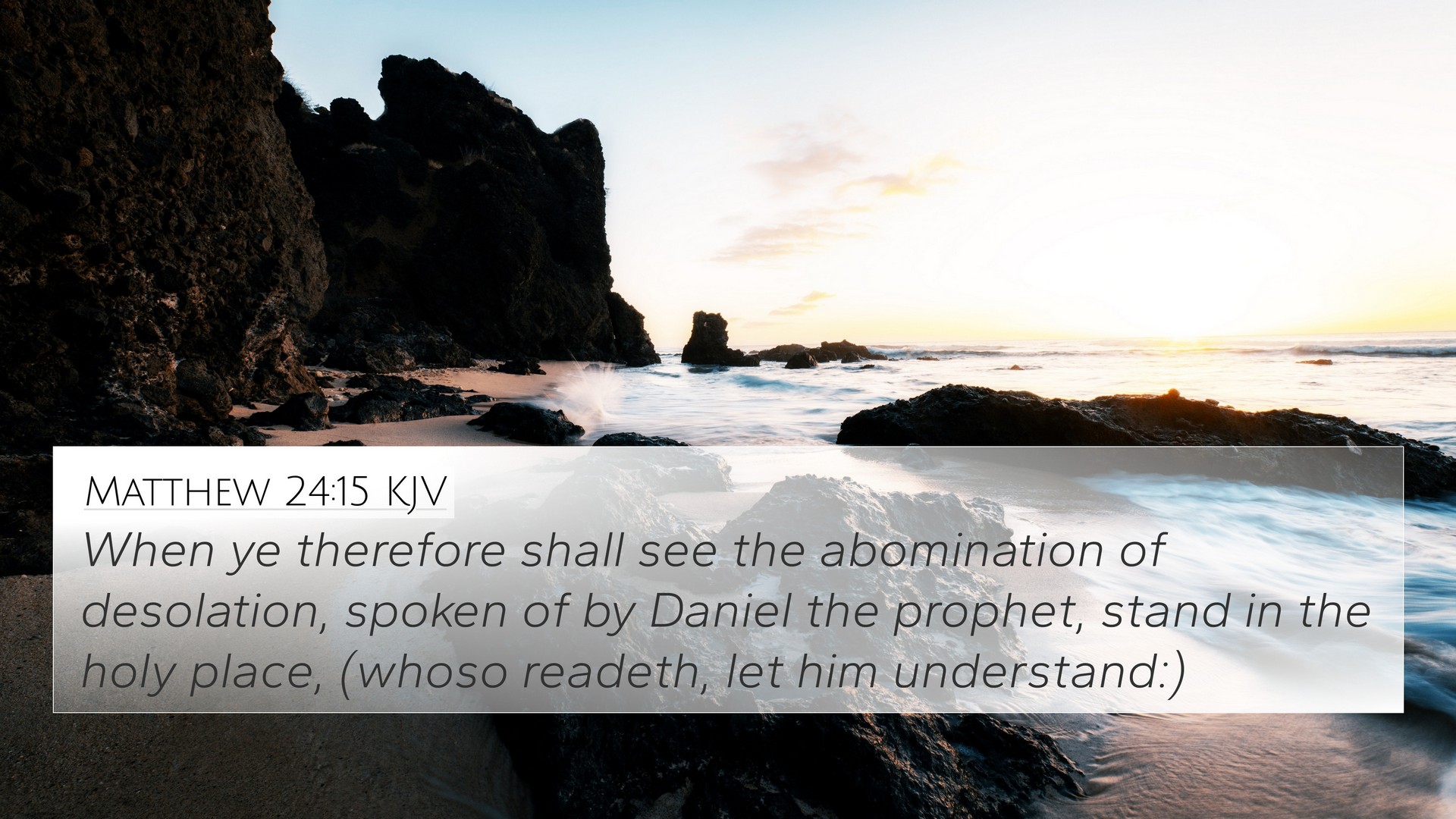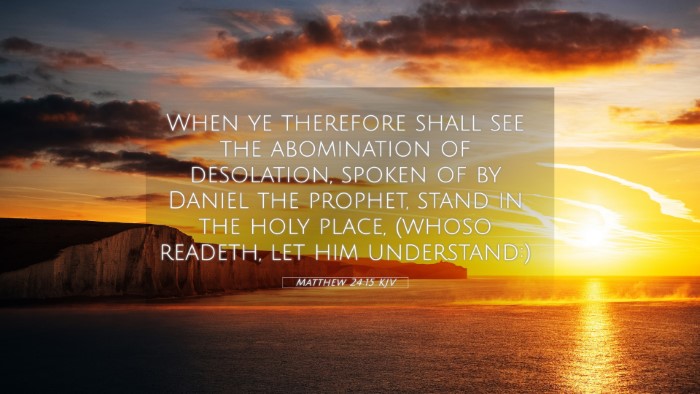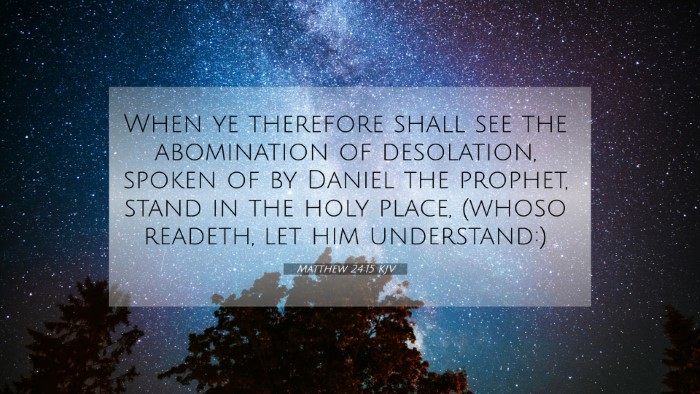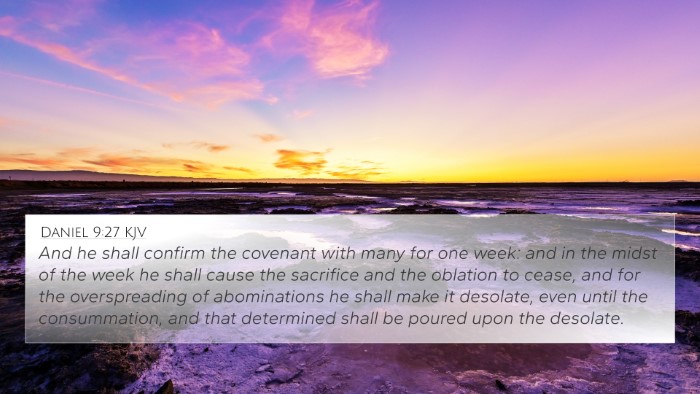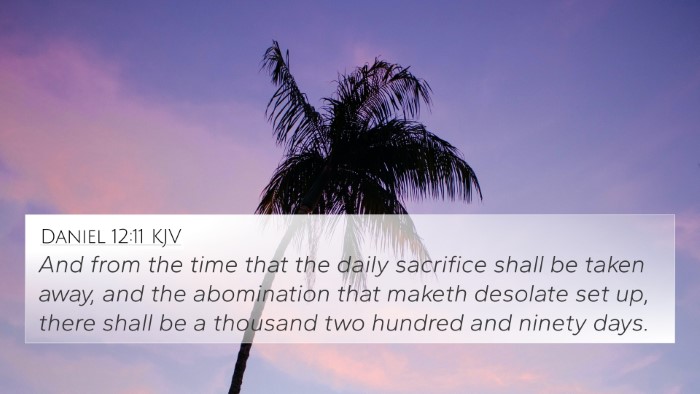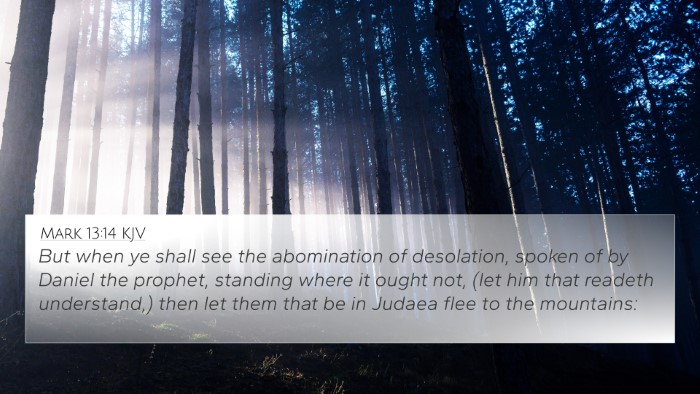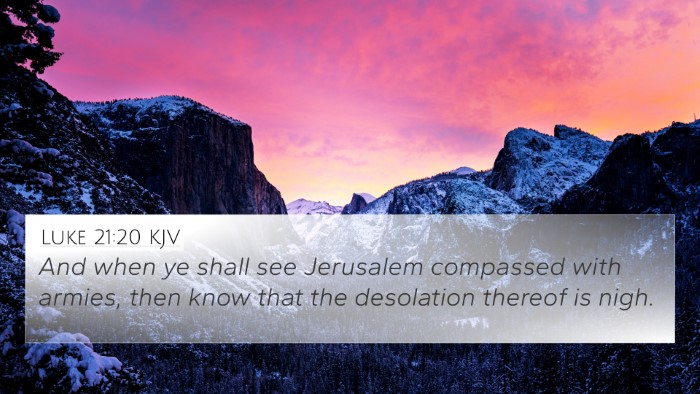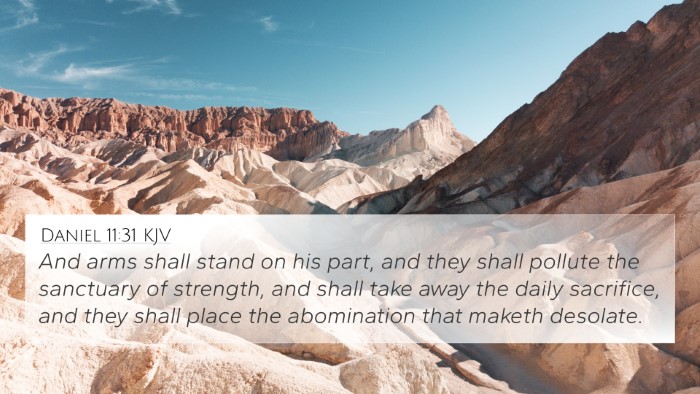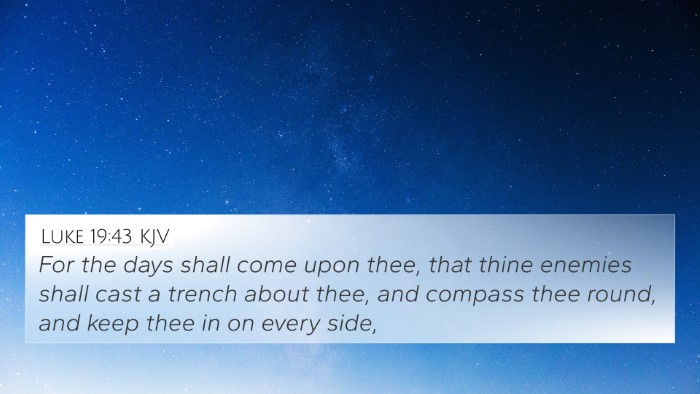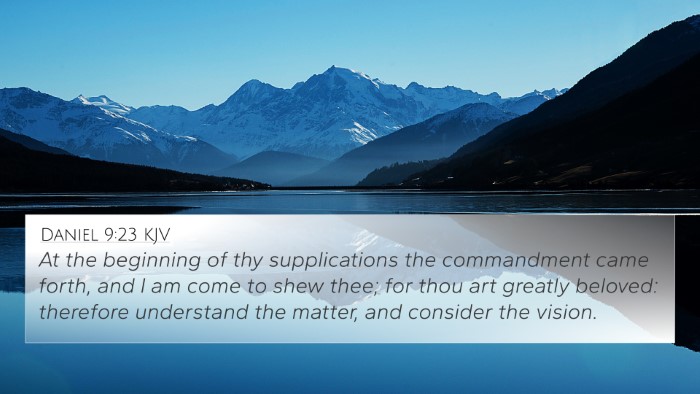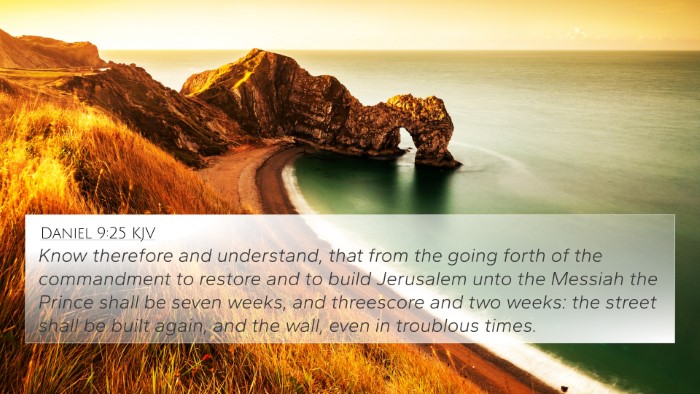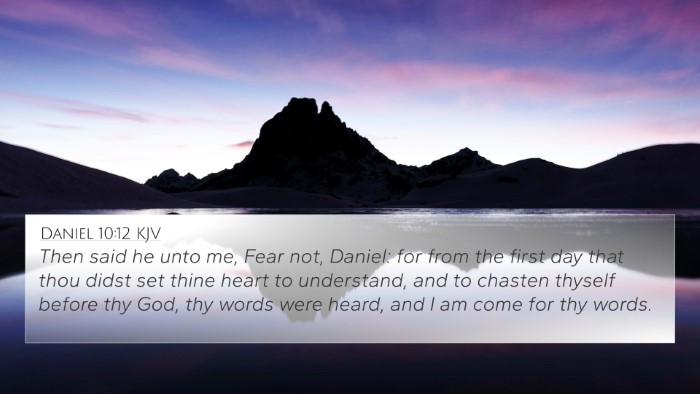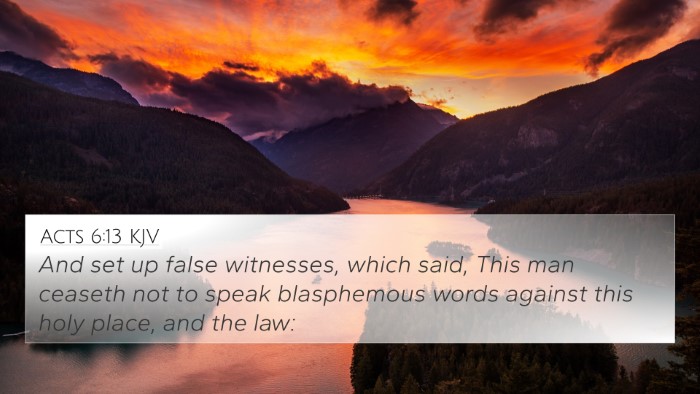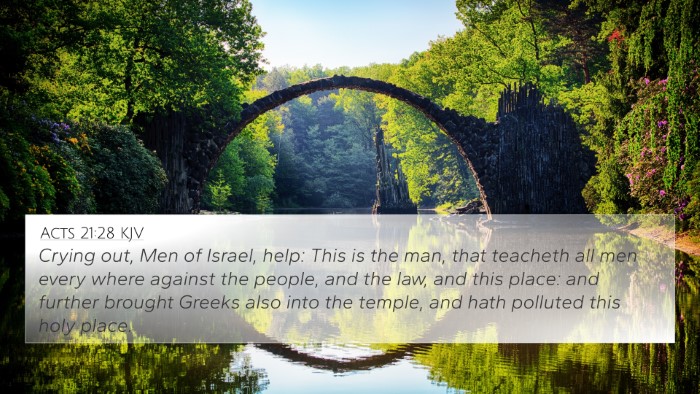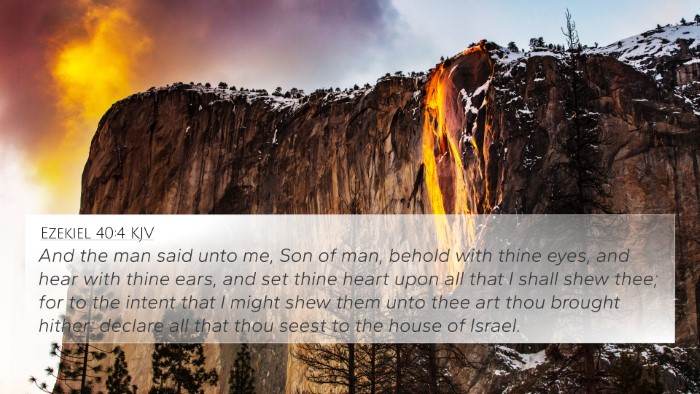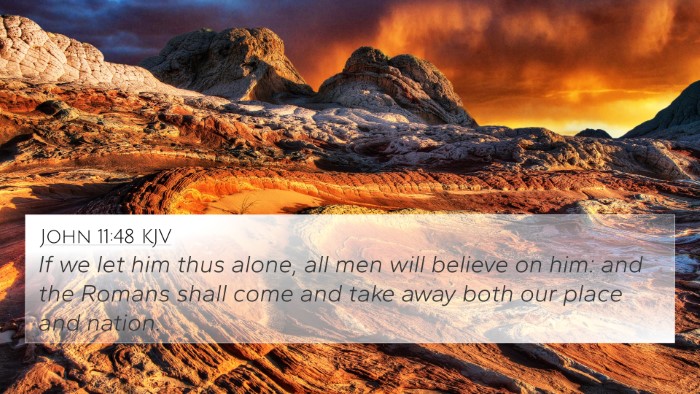Understanding Matthew 24:15
Matthew 24:15 states: "So when you see the abomination of desolation spoken of by the prophet Daniel, standing in the holy place (let the reader understand),". This verse carries profound implications concerning end times and prophetic significance within the biblical narrative.
Commentary Insights
This verse is pivotal in understanding the discourse Jesus had regarding the signs that would precede the end of the age. The phrase "abomination of desolation" refers to a prophetic event foretold by Daniel, which represents a desolating sacrilege that leads to spiritual and physical ruin.
- Matthew Henry: Henry highlights the grave nature of this prophetic warning. He notes that the "abomination of desolation" signifies an interruption of the holy worship due to idolatrous practices, pointing towards both historical and future fulfillments.
- Albert Barnes: Barnes elaborates by connecting this statement to the Jewish destruction in AD 70 and its implications for the faithful. He stresses that Christians should be vigilant and prepared for tribulations that test their faith.
- Adam Clarke: Clarke emphasizes the urgency of understanding this warning, urging believers to discern not only the signs but also the broader implications of abandoning true worship.
Thematic Connections Between Bible Verses
Matthew 24:15 invites readers to explore numerous connections between verses that speak of desolation, prophetic fulfillment, and vigilance:
- Daniel 9:27: Refers to a covenant of many and the cessation of sacrifice, echoing the theme of desolation.
- Mark 13:14: A parallel account in Mark emphasizes the call to flee when this sign appears.
- Luke 21:20: Describes the siege of Jerusalem, linking to the prophetic warning of desolation.
- 2 Thessalonians 2:4: Discusses the man of sin sitting in the temple of God, drawing parallels with the abomination referenced in Matthew 24:15.
- Revelation 13:14-15: Talks about the beast performing great signs, illustrating the fulfillment of desolation in the last days.
- Jeremiah 25:11-12: A prophetic foretelling of desolation upon nations, resonating with the theme of divine judgment.
- Zechariah 14:1-2: Prophesies about the day of the Lord and the attack on Jerusalem, mirroring the events Jesus describes.
Cross-Referencing Bible Texts
To appreciate the full landscape of biblical prophecy and desolation, cross-referencing other related scripture is essential. Here’s how we approach these thematic connections:
Tools for Bible Cross-Referencing
- Bible Concordance: Utilize a concordance to find related terms like "desolation" and "abomination."
- Bible Cross-Reference Guide: Refer to a well-structured guide for thematic studies on prophecy.
- Cross-Referencing Bible Study Methods: Apply methods that highlight interconnectedness among verses.
Identifying Connections Between Old and New Testament
Understanding Matthew 24:15 also involves recognizing connections between the Old and New Testaments, where themes of judgment, prophecy, and desolation unfold:
- The significance of the temple as a place of worship and its potential desolation in both Testaments.
- Prophetic fulfillments in the ministry of Christ compared to earlier prophets like Daniel and Jeremiah.
Conclusion
In summary, Matthew 24:15 serves as a pivotal prophetic marker, calling believers to vigilance and understanding. By cross-referencing this verse with others, believers can gain a comprehensive view of biblical themes of desolation, judgment, and the call to faithfulness amid trials.
As we develop our understanding of such verses through scriptural cross-referencing, we appreciate the richness and depth of biblical prophecy.
